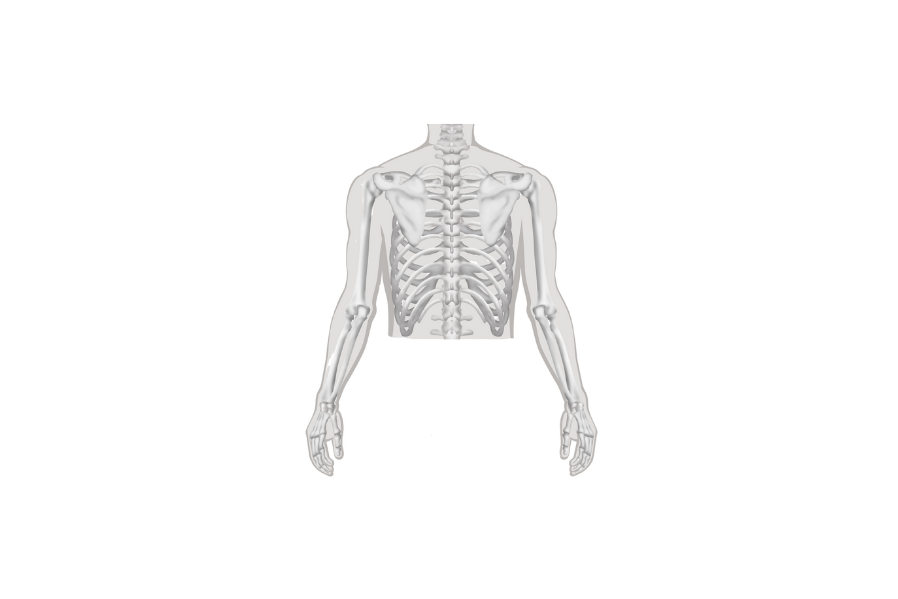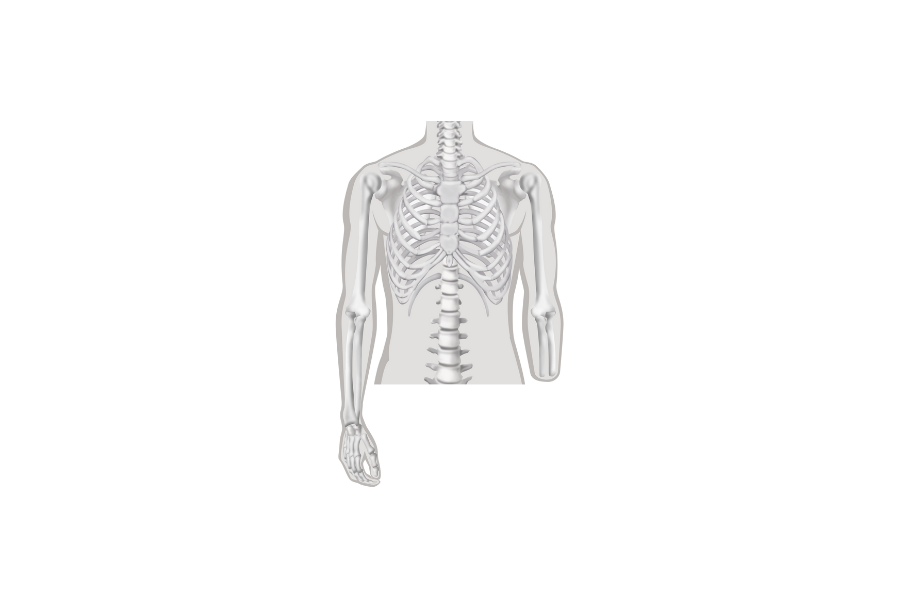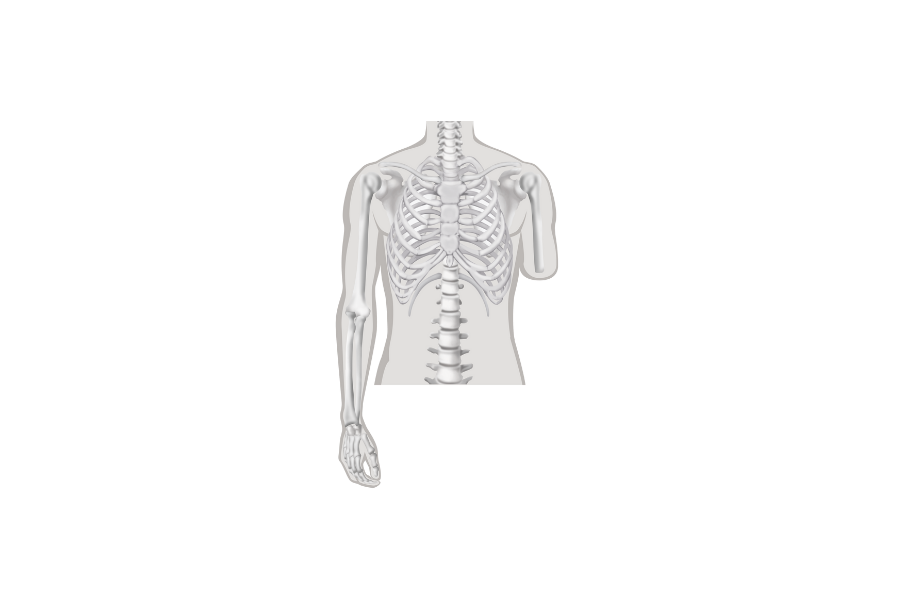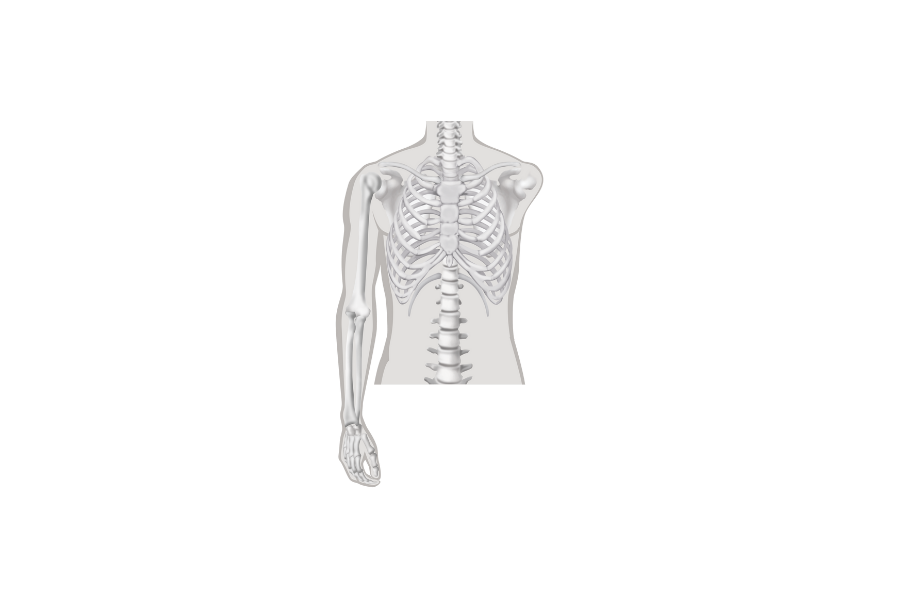Amputation levels with a hand and arm amputation
The type of prosthetic arm that is best for you depends on a number of things. The amputation level is a decisive factor. But in choosing a prosthesis, it is also important to determine what is important to you personally. To what extent, for example, do you want your hand to function in a particular way?
Generally speaking, there are four types of prosthetic arms:
- Cosmetic: a prosthesis that only serves a support and aesthetic function.
- Mechanical: controlled using a cable system. The user operates it with torso movements.
- Myoelectric: the prosthesis is controlled by muscle signals.
- Hybrid: a combination of mechanical and myoelectric.
Learning to use these prostheses properly requires training and practice. This is done together with a multidisciplinary team comprising a rehab specialist, an occupational and physical therapist, and an orthopaedic consultant. These professionals will help you use your (new) prosthesis as effectively as possible. You can learn specific exercises that can be done with a prosthetic arm.

Hand defects
Is part of your hand or only a few fingers amputated? You can be fitted for a prosthesis with a few, several or parts of a finger. With this type of prosthesis, you can choose between a silicone model or one in which you can move the individual fingers (in full or in part).
This lets you optimise the grip function of all or part of the fingers. For these prostheses, you consult with a special ‘hands team’ that includes an occupational therapist. The team trains you in the general everyday use of the prosthesis.

Prosthesis for wrist disarticulation
Have you undergone a wrist amputation, also called a wrist disarticulation? In this case, you are usually given a prosthetic socket onto which the prosthetic hand is attached. This provides added stability and functionality. The downside? The forearm may be longer than the ‘healthy’ side. But there are more and more systems available that limit this to a minimum. A partial hand prosthesis or silicone fingers can offer a practical solution.

Prosthesis for forearm amputation
All types of amputations between the wrist and elbow actually fall into the category of forearm amputation. On this amputation level, you need a prosthetic hand that can imitate the grip function of a hand. You can also opt for a wrist rotator, so that you lose virtually none of the functionality of your arm.
For this reason, myoelectric prostheses are usually chosen for forearm amputations. Multiarticular hands are also becoming more advanced, with not only two fingers that you can move, but also the thumbs and every finger group separately. This gives you much more grip and stability with your prosthetic hand.

Prosthesis for upper arm amputation
With an upper arm amputation, most people choose a prosthesis that is fully controlled by a myoelectric system. This offers more freedom of movement because few to no bandages are needed to control the elbow or hand. With this prosthesis, you can choose various components depending on what’s important to you. The possibilities include an electric elbow, wrist rotator and multiarticular hand. This prosthesis is quite complex, which means you need the right type of training to learn to use it as effectively as possible.

Prosthesis for shoulder amputation
With this type of amputation, you not only lose the wrist and elbow joint, but also the shoulder joint, which is removed. So, in determining the right prosthesis, it is important to choose one that can imitate the shoulder joint – both the front and back movement. These components can be controlled with myo-signals. These signals are located together with an orthopaedic consultant to make sure you choose the right components. The prosthesis is attached using a shoulder cap.
